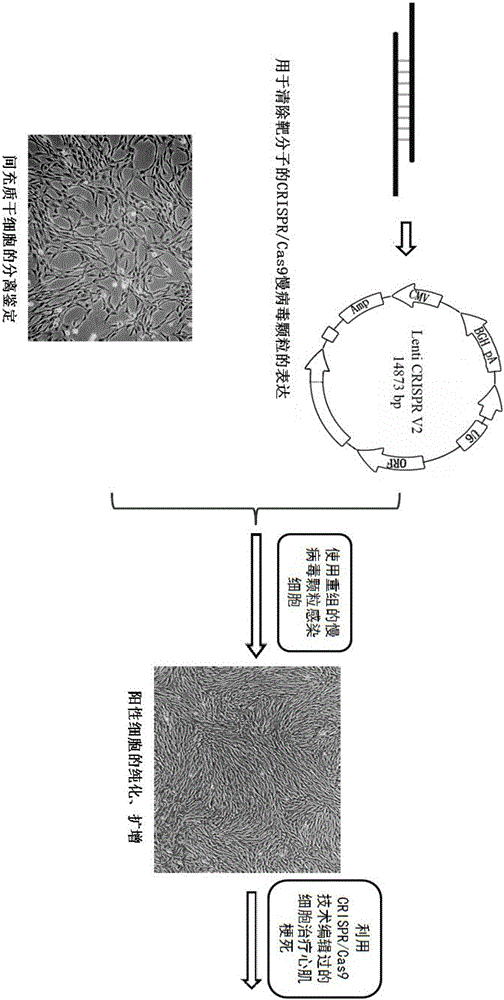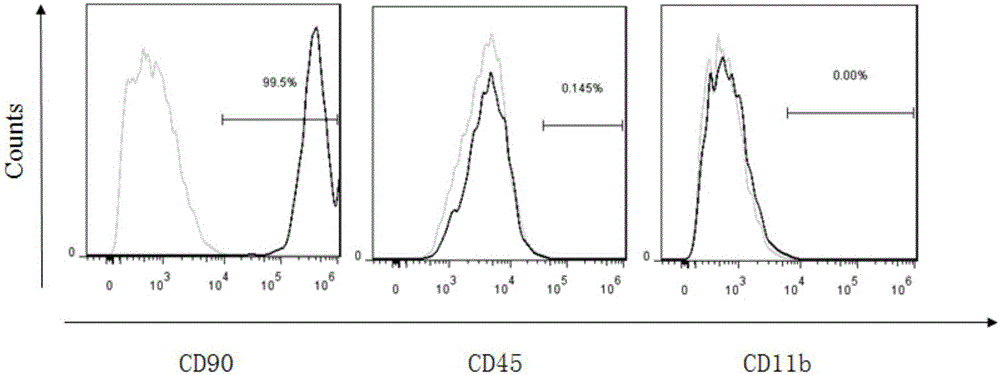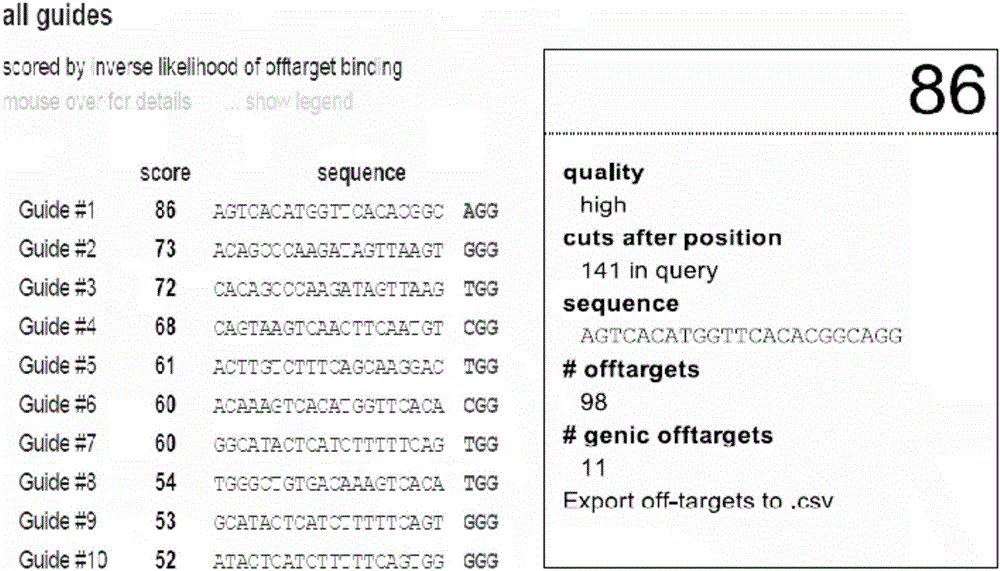Preparation method of allogenic mesenchymal stem cells by CRISPR (clustered regularly interspaced short palindromic repeats) technique editing and IGF (insulin-like growth factor) optimization and application of allogenic mesenchymal stem cells in treating myocardial infarction
A mesenchymal stem cell and allogeneic technology, applied in the field of allogeneic mesenchymal stem cells, can solve the problems that cell transplantation therapy is difficult to take effect, patients have no time to prepare MSCs, and myocardial infarction is urgent, so as to improve the ability of anti-apoptosis, save money, and promote regression. nest effect
- Summary
- Abstract
- Description
- Claims
- Application Information
AI Technical Summary
Problems solved by technology
Method used
Image
Examples
Embodiment 1
[0053] Example 1. Isolation of human umbilical cord blood mesenchymal stem cells:
[0054] 1) The umbilical cord blood of fetuses delivered by vaginal delivery and cesarean section was collected under sterile conditions, and anticoagulated with heparin.
[0055] 2) Immediately after the specimen collection, the cord blood was diluted with PBS at a ratio of 1:1.
[0056] 3) Slowly add the diluted blood to an equal volume of lymphocyte separation solution, and the addition should be slow, taking care not to break through the stratification between the liquids, and centrifuge at 1000r / min for 15min.
[0057] 4) Carefully absorb the buffy coat layer at the middle interface, wash twice with PBS, suspend the cells in serum-free human mesenchymal stem cell (hMSC) medium to make a single cell suspension, and use 5×10 6 / mL density inoculation, placed at 37°C, 5% CO 2 cultured in an incubator.
[0058] 5) Change the medium after 7 days to remove non-adherent cells, and subculture af...
Embodiment 2
[0059] Example 2. Identification of human umbilical cord blood mesenchymal stem cells
[0060] 1) The 3rd passage cells in good growth state were taken and digested with 0.25% trypsin. The digested cells were centrifuged, resuspended in PBS, and counted.
[0061] 2) Adjust the cell concentration to 1×10 6 / ml, pipette 100μl into each EP tube, that is, 1×10 5 cells. Add fluorescein-labeled CD90-FITC (USA eBioscience, Cat. # : 11-0909 -41), CD45-FITC (eBioscience, USA, Cat. # : 11-9459-41), CD11b-PE (USA eBioscience, Cat # :12-0113-41).
[0062] 3) After incubating in the dark for 30 minutes, wash twice with PBS, and perform flow cytometry detection. The detection results are as follows: figure 2 , the abscissa indicates the fluorescence intensity, and the ordinate indicates the number of cells detected by flow cytometry.
Embodiment 3
[0063] Example 3 Design of target molecules B2M-gRNA and TNF-α-gRNA edited by mesenchymal stem cells
[0064] 1) Find the exons of the B2M gene from the ENSEMBL website, and find that the gene has 14 transcripts in total, but only 3 transcripts can encode proteins, namely B2M-001, B2M-006, and B2M-201.
[0065] 2) After comparing the three transcripts of B2M-001, B2M-006 and B2M-201, it was found that they have a common exon - ENSE00002219576. The sequence for ENSE00002219576 is as follows:
[0066] ENSE00002219576:
[0067] CCGACATTGAAGTTGACTTACTGAAGAATGGAGAGAGAATTGAAAAAGTGGAGCATTCAGACTTGTCTTTCAGCAAGGACTGGTCTTTCTATCTCTTGTACTACACTGAATTCACCCCCACTGAAAAAGATGAGTATGCCTGCCGTGTGAACCATGTGACTTTGTCACAGCCCAAGATAGTTAAGTGGG
[0068] 3) Input the exon into the "OPTIMISED" website to obtain DNA oligo sequences corresponding to 14 candidate gRNAs, and screen and select the oligo sequence AGTCACATGGTTCACACGGCAGG with a relatively high score. (Such as image 3 )
[0069] 4) Using the same ...
PUM
 Login to View More
Login to View More Abstract
Description
Claims
Application Information
 Login to View More
Login to View More - R&D
- Intellectual Property
- Life Sciences
- Materials
- Tech Scout
- Unparalleled Data Quality
- Higher Quality Content
- 60% Fewer Hallucinations
Browse by: Latest US Patents, China's latest patents, Technical Efficacy Thesaurus, Application Domain, Technology Topic, Popular Technical Reports.
© 2025 PatSnap. All rights reserved.Legal|Privacy policy|Modern Slavery Act Transparency Statement|Sitemap|About US| Contact US: help@patsnap.com



